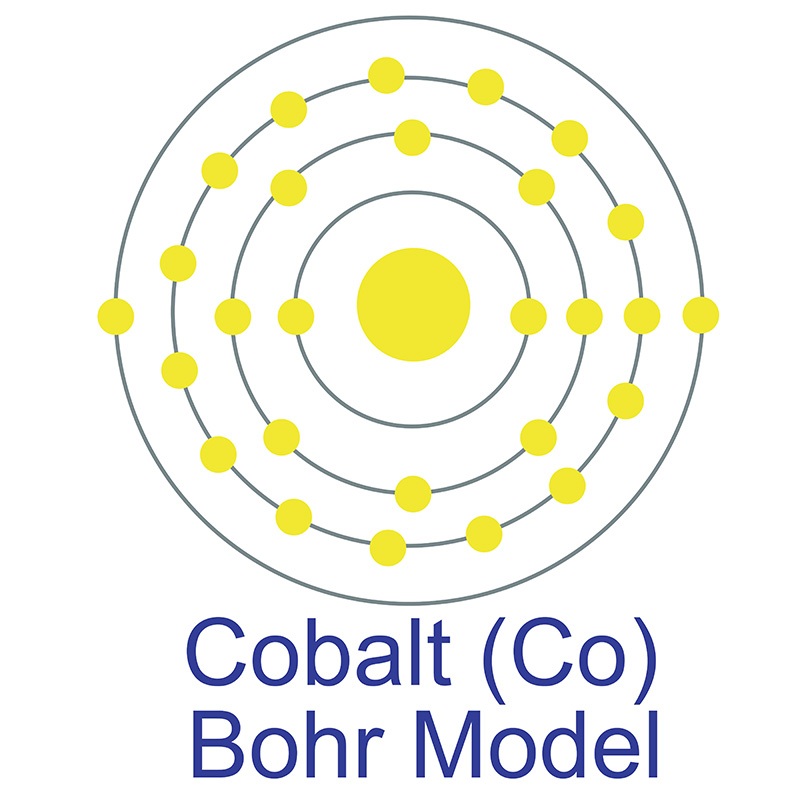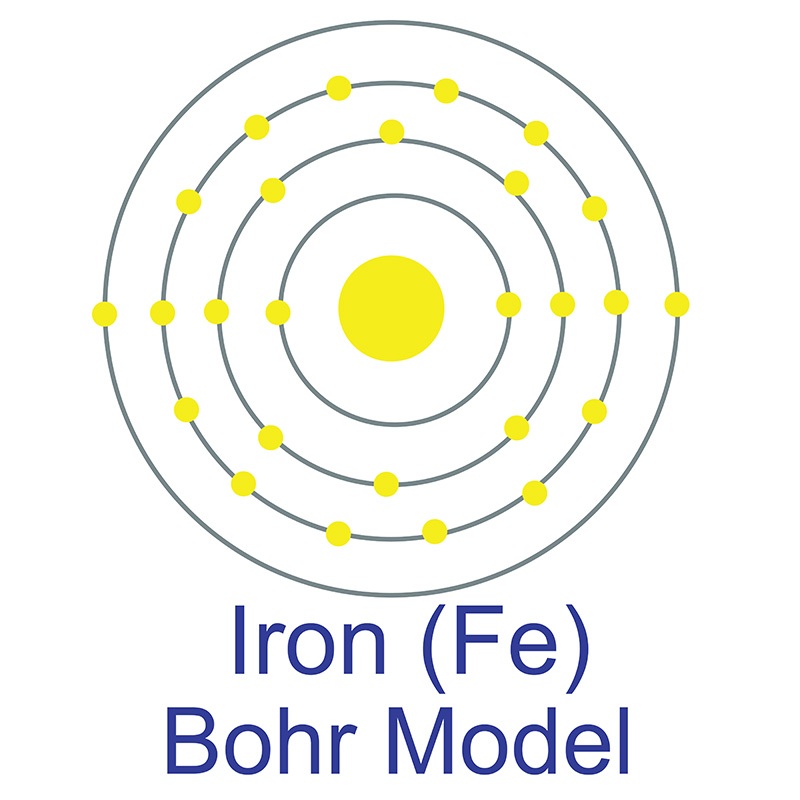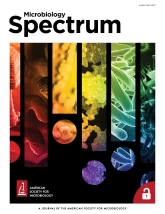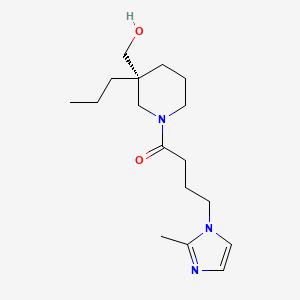SECTION 1. IDENTIFICATION
Product Name: Cobalt Iron Oxide
Product Number: All applicable American Elements product codes, e.g. CO-FEO-02
, CO-FEO-03
, CO-FEO-04
, CO-FEO-05
CAS #: 12052-28-7
Relevant identified uses of the substance: Scientific research and development
Supplier details:
American Elements
10884 Weyburn Ave.
Los Angeles, CA 90024
Tel: +1 310-208-0551
Fax: +1 310-208-0351
Emergency telephone number:
Domestic, North America: +1 800-424-9300
International: +1 703-527-3887
SECTION 2. HAZARDS IDENTIFICATION
Classification of the substance or mixture
Classification according to Regulation (EC) No 1272/2008
GHS06 Skull and crossbones
Acute Tox. 3 H301 Toxic if swallowed.
GHS07
Skin Sens. 1 H317 May cause an allergic skin reaction.
Classification according to Directive 67/548/EEC or Directive 1999/45/EC
Xn; Harmful
R22: Harmful if swallowed.
Xi; Sensitizing
R43: May cause sensitization by skin contact.
Information concerning particular hazards for human and environment:
N/A
Hazards not otherwise classified
No data available
Label elements
Labelling according to Regulation (EC) No 1272/2008
The substance is classified and labeled according to the CLP regulation.
Hazard pictograms

GHS06
Signal word: Danger
Hazard statements
H301 Toxic if swallowed.
H317 May cause an allergic skin reaction.
Precautionary statements
P261 Avoid breathing dust/fume/gas/mist/vapors/spray.
P280 Wear protective gloves/protective clothing/eye protection/face protection.
P301+P310 IF SWALLOWED: Immediately call a POISON CENTER/ doctor/...
P363 Wash contaminated clothing before reuse.
P405 Store locked up.
P501 Dispose of contents/container in accordance with local/regional/national/international regulations.
WHMIS classification
D1B - Toxic material causing immediate and serious toxic effects
D2A - Very toxic material causing other toxic effects
Classification system
HMIS ratings (scale 0-4)
(Hazardous Materials Identification System)
HEALTH
FIRE
REACTIVITY
1
0
0
Health (acute effects) = 1
Flammability = 0
Physical Hazard = 0
Other hazards
Results of PBT and vPvB assessment
PBT: N/A
vPvB: N/A
SECTION 3. COMPOSITION/INFORMATION ON INGREDIENTS
Substances
CAS No. / Substance Name:
12052-28-7 Cobalt iron oxide (Cobalt ferrite)
Identification number(s):
EC number: 234-992-3
SECTION 4. FIRST AID MEASURES
Description of first aid measures
If inhaled:
Supply patient with fresh air. If not breathing, provide artificial respiration. Keep patient warm.
Seek immediate medical advice.
In case of skin contact:
Immediately wash with soap and water; rinse thoroughly.
Seek immediate medical advice.
In case of eye contact:
Rinse opened eye for several minutes under running water. Consult a physician.
If swallowed:
Seek medical treatment.
Information for doctor
Most important symptoms and effects, both acute and delayed
No data available
Indication of any immediate medical attention and special treatment needed
No data available
SECTION 5. FIREFIGHTING MEASURES
Extinguishing media
Suitable extinguishing agents
Carbon dioxide, extinguishing powder or water spray. Fight larger fires with water spray or alcohol resistant foam.
Special hazards arising from the substance or mixture
If this product is involved in a fire, the following can be released:
Metal oxide fume
Advice for firefighters
Protective equipment:
Wear self-contained respirator.
Wear fully protective impervious suit.
SECTION 6. ACCIDENTAL RELEASE MEASURES
Personal precautions, protective equipment and emergency procedures
Use personal protective equipment. Keep unprotected persons away.
Ensure adequate ventilation
Environmental precautions:
Do not allow material to be released to the environment without official permits.
Do not allow product to enter drains, sewage systems, or other water courses.
Do not allow material to penetrate the ground or soil.
Methods and materials for containment and cleanup:
Dispose of contaminated material as waste according to section 13.
Prevention of secondary hazards:
No special measures required.
Reference to other sections
See Section 7 for information on safe handling
See Section 8 for information on personal protection equipment.
See Section 13 for disposal information.
SECTION 7. HANDLING AND STORAGE
Handling
Precautions for safe handling
Keep container tightly sealed.
Store in cool, dry place in tightly closed containers.
Ensure good ventilation at the workplace.
Information about protection against explosions and fires:
No data available
Conditions for safe storage, including any incompatibilities
Requirements to be met by storerooms and receptacles:
No special requirements.
Information about storage in one common storage facility:
No data available
Further information about storage conditions:
Keep container tightly sealed.
Store in cool, dry conditions in well-sealed containers.
Specific end use(s)
No data available
SECTION 8. EXPOSURE CONTROLS/PERSONAL PROTECTION
Additional information about design of technical systems:
Properly operating chemical fume hood designed for hazardous chemicals and having an average face velocity of at least 100 feet per minute.
Control parameters
Components with limit values that require monitoring at the workplace:
Cobalt, elemental & inorganic compounds, as Co
mg/m3
ACGIH TLV 0.02; Confirmed animal carcinogen
Austria Carcinogen
Belgium TWA 0.05
Denmark TWA 0.05
Finland TWA 0.05 (skin)
Germany Carcinogen
Hungary TWA 0.1; 0.2-STEL
Japan OEL 0.05; 2B-Carcinogen
Korea TLV 0.02; Confirmed animal carcinogen
Netherlands MAC-TGG 0.05
Norway TWA 0.05
Poland TWA 0.05; 0.2-STEL
Russia 0.5-STEL
Sweden NGV 0.05
Switzerland MAK-W 0.1; Carcinogen
United Kingdom TWA 0.1
USA PEL 0.1 (dust and fume)
Additional information: No data
Exposure controls
Personal protective equipment
Follow typical protective and hygienic practices for handling chemicals.
Keep away from foodstuffs, beverages and feed.
Remove all soiled and contaminated clothing immediately.
Wash hands before breaks and at the end of work.
Maintain an ergonomically appropriate working environment.
Breathing equipment:
Use suitable respirator when high concentrations are present.
Protection of hands:
Impervious gloves
Inspect gloves prior to use.
Suitability of gloves should be determined both by material and quality, the latter of which may vary by manufacturer.
Eye protection: Safety glasses
Body protection: Protective work clothing.
SECTION 9. PHYSICAL AND CHEMICAL PROPERTIES
Information on basic physical and chemical properties
Appearance:
Form: Powder or solid in various forms
Color: Grey
Odor: No data available
Odor threshold: No data available.
pH: N/A
Melting point/Melting range: No data available
Boiling point/Boiling range: No data available
Sublimation temperature / start: No data available
Flash point: N/A
Flammability (solid, gas): No data available.
Ignition temperature: No data available
Decomposition temperature: No data available
Autoignition: No data available.
Danger of explosion: Product does not present an explosion hazard.
Explosion limits:
Lower: No data available
Upper: No data available
Vapor pressure: N/A
Density: No data available
Relative density: No data available.
Vapor density: N/A
Evaporation rate: N/A
Solubility in Water (H2O): No data available
Partition coefficient (n-octanol/water): No data available.
Viscosity:
Dynamic: N/A
Kinematic: N/A
Other information
No data available
SECTION 10. STABILITY AND REACTIVITY
Reactivity
No data available
Chemical stability
Stable under recommended storage conditions.
Thermal decomposition / conditions to be avoided:
Decomposition will not occur if used and stored according to specifications.
Possibility of hazardous reactions
No dangerous reactions known
Conditions to avoid
No data available
Incompatible materials:
None known.
No data available
Hazardous decomposition products:
Metal oxide fume
SECTION 11. TOXICOLOGICAL INFORMATION
Information on toxicological effects
Acute toxicity:
Harmful if swallowed.
LD/LC50 values that are relevant for classification: No data
Skin irritation or corrosion: Irritant to skin and mucous membranes.
Eye irritation or corrosion: Irritating effect.
Sensitization: May cause an allergic skin reaction.
Germ cell mutagenicity: No effects known.
Carcinogenicity:
IARC-2B: Possibly carcinogenic to humans: limited evidence in humans in the absence of sufficient evidence in experimental animals.
ACGIH A3: Animal carcinogen: Agent is carcinogenic in experimental animals at a relatively high dose, by route(s) of administration, at site(s), of histologic type(s), or by mechanism(s) not considered relevant to worker exposure. Available epidemologic studies do not confirm an increased risk of cancer in exposed humans.
Available evidence suggests that the agent is not likely to cause cancer in humans except under uncommon or unlikely routes or levels of exposure.
Reproductive toxicity: No effects known.
Specific target organ system toxicity - repeated exposure: No effects known.
Specific target organ system toxicity - single exposure: No effects known.
Aspiration hazard: No effects known.
Subacute to chronic toxicity:
Cobalt is an experimental neoplastigen and tumorigen. It is an experimental carcinogen of the connective tissue and lungs. Cobalt metal and inorganic compounds are classified as an animal carcinogen by the ACGIH. Ingestion may cause burning in the mouth, esophagus, and stomach. Inhalation of dusts and fumes may cause irritation of the respiratory tract and labored breathing and coughing. Sensitization, nausea, flushing of the face and ringing in the ears is also possible. Chronic ingestion may result in pericardial effusion, polycardial effusion, polycythemia, cardiac failure, vomiting, convulsions and thyroid enlargement.
Iron compounds may cause vomiting, diarrhea, pink urine, black stool, and liver damage. May cause damage to the kidneys. Irritating to the respiratory tract, they may cause pulmonary fibros is if dusts are inhaled.
Subacute to chronic toxicity: No effects known.
Additional toxicological information:
To the best of our knowledge the acute and chronic toxicity of this substance is not fully known.
SECTION 12. ECOLOGICAL INFORMATION
Toxicity
Aquatic toxicity:
No data available
Persistence and degradability
No data available
Bioaccumulative potential
No data available
Mobility in soil
No data available
Additional ecological information:
Do not allow material to be released to the environment without official permits.
Do not allow undiluted product or large quantities to reach groundwater, water courses, or sewage systems.
Avoid transfer into the environment.
Results of PBT and vPvB assessment
PBT: N/A
vPvB: N/A
Other adverse effects
No data available
SECTION 13. DISPOSAL CONSIDERATIONS
Waste treatment methods
Recommendation
Consult official regulations to ensure proper disposal.
Uncleaned packagings:
Recommendation:
Disposal must be made according to official regulations.
SECTION 14. TRANSPORT INFORMATION
Not a hazardous material for transportation.
UN-Number
DOT, IMDG, IATA
None
UN proper shipping name
DOT, IMDG, IATA
None
Transport hazard class(es)
DOT, ADR, IMDG, IATA
Class
None
Packing group
DOT, IMDG, IATA
None
Environmental hazards:
N/A
Special precautions for user
N/A
Transport in bulk according to Annex II of MARPOL73/78 and the IBC Code
N/A
Transport/Additional information:
Not dangerous according to
the above specifications.
DOT
Marine Pollutant (DOT):
No
SECTION 15. REGULATORY INFORMATION
Safety, health and environmental regulations/legislation specific for the substance or mixture
National regulations
All components of this product are listed in the U.S. Environmental Protection Agency Toxic Substances Control Act Chemical substance Inventory.
All components of this product are listed on the Canadian Non-Domestic Substances List (NDSL).
SARA Section 313 (specific toxic chemical listings)
12052-28-7 Cobalt iron oxide
California Proposition 65
Prop 65 - Chemicals known to cause cancer
Substance is not listed.
Prop 65 - Developmental toxicity
Substance is not listed.
Prop 65 - Developmental toxicity, female
Substance is not listed.
Prop 65 - Developmental toxicity, male
Substance is not listed.
Information about limitation of use:
For use only by technically qualified individuals.
This product contains cobalt and is subject to the reporting requirements of section 313 of the Emergency Planning and Community Right to Know Act of 1986 and
40CFR372.
Other regulations, limitations and prohibitive regulations
Substance of Very High Concern (SVHC) according to the REACH Regulations (EC) No. 1907/2006.
Substance is not listed.
The conditions of restrictions according to Article 67 and Annex XVII of the Regulation (EC) No 1907/2006 (REACH) for the manufacturing, placing on the market and use must be observed.
Substance is not listed.
Annex XIV of the REACH Regulations (requiring Authorisation for use)
Substance is not listed.
REACH - Pre-registered substances
Substance is listed.
Chemical safety assessment:
A Chemical Safety Assessment has not been carried out.
SECTION 16. OTHER INFORMATION
Safety Data Sheet according to Regulation (EC) No. 1907/2006 (REACH). The above information is believed to be correct but does not purport to be all inclusive and shall be used only as a guide. The information in this document is based on the present state of our knowledge and is applicable to the product with regard to appropriate safety precautions. It does not represent any guarantee of the properties of the product. American Elements shall not be held liable for any damage resulting from handling or from contact with the above product. See reverse side of invoice or packing slip for additional terms and conditions of sale. COPYRIGHT 1997-2022 AMERICAN ELEMENTS. LICENSED GRANTED TO MAKE UNLIMITED PAPER COPIES FOR INTERNAL USE ONLY.
 The number of electrons in each of cobalt's shells is 2, 8, 15, 2 and its electron configuration is [Ar]3d7 4s2. The cobalt atom has a radius of 125 pm and a Van der Waals radius of 192 pm. Cobalt was first discovered by George Brandt in 1732. In its elemental form, cobalt has a lustrous gray appearance. Cobalt is found in cobaltite, erythrite, glaucodot and skutterudite ores.
The number of electrons in each of cobalt's shells is 2, 8, 15, 2 and its electron configuration is [Ar]3d7 4s2. The cobalt atom has a radius of 125 pm and a Van der Waals radius of 192 pm. Cobalt was first discovered by George Brandt in 1732. In its elemental form, cobalt has a lustrous gray appearance. Cobalt is found in cobaltite, erythrite, glaucodot and skutterudite ores.  Cobalt produces brilliant blue pigments which have been used since ancient times to color paint and glass. Cobalt is a ferromagnetic metal and is used primarily in the production of magnetic and high-strength superalloys. Co-60, a commercially important radioisotope, is useful as a radioactive tracer and gamma ray source. The origin of the word Cobalt comes from the German word "Kobalt" or "Kobold," which translates as "goblin," "elf" or "evil spirit.
Cobalt produces brilliant blue pigments which have been used since ancient times to color paint and glass. Cobalt is a ferromagnetic metal and is used primarily in the production of magnetic and high-strength superalloys. Co-60, a commercially important radioisotope, is useful as a radioactive tracer and gamma ray source. The origin of the word Cobalt comes from the German word "Kobalt" or "Kobold," which translates as "goblin," "elf" or "evil spirit. The iron atom has a radius of 126 pm and a Van der Waals radius of 194 pm. Iron was discovered by humans before 5000 BC. In its elemental form, iron has a lustrous grayish metallic appearance. Iron is the fourth most common element in the Earth's crust and the most common element by mass forming the earth as a whole. Iron is rarely found as a free element, since it tends to oxidize easily; it is usually found in minerals such as magnetite, hematite, goethite, limonite, or siderite.
The iron atom has a radius of 126 pm and a Van der Waals radius of 194 pm. Iron was discovered by humans before 5000 BC. In its elemental form, iron has a lustrous grayish metallic appearance. Iron is the fourth most common element in the Earth's crust and the most common element by mass forming the earth as a whole. Iron is rarely found as a free element, since it tends to oxidize easily; it is usually found in minerals such as magnetite, hematite, goethite, limonite, or siderite. Though pure iron is typically soft, the addition of carbon creates the
Though pure iron is typically soft, the addition of carbon creates the 
